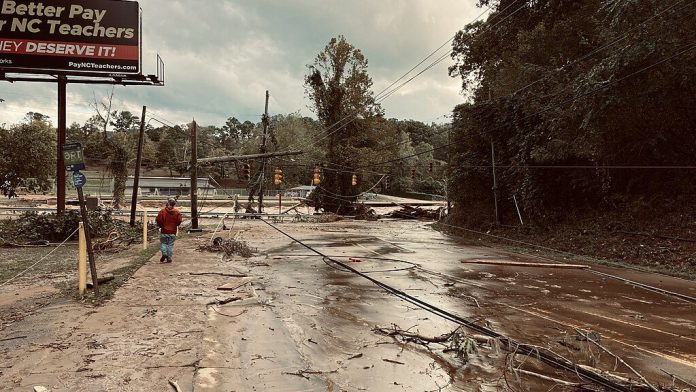Drone Heroes to the Rescue in North Carolina’s Mountains
Hurricane Helene left a mess in western North Carolina, destroying roads and isolating many people.
After the storm hit, Jeff Clack from Bestway Ag and his team of volunteers took action. They used their drones to deliver vital items like food and medicine to those who were stuck. Flying heavy-lift drones, these pilots worked with first responders on the ground, ensuring supplies reached about 100 people in need.
“We began flying [Search and Recovery] missions almost immediately,” Clack explained. With a fleet of DJI drones, they coordinated efforts and communicated with stranded folks using speakers attached to the drones. The storm had caused landslides, wiping out roads and leaving communities trapped in the Appalachian region.
People do amazing things when they come together to help others.
Once they figured out where help was needed, the drone team got to work fast. They used GPS to find drop zones, then delivered nearly two tons of food, water, and other supplies. The drones flew over challenging terrain, using smaller drones to relay signals and keep in contact. At each drop site, they warned people to stay safe while the drones did their job. “Safety is paramount, and we don’t want to create another problem,” Clack noted.
Russell Hedrick, a farmer and former firefighter, helped kickstart this drone mission. He made countless calls to connect with local emergency centers, eventually finding one near Marion, which deployed the drones. With equipment and supplies loaded, Hedrick and his team joined Clack for the relief efforts.
Every day, the volunteers got new assignments to search for survivors. While they praised local officials for handling the disaster well, Hedrick had concerns about the federal response, especially regarding drone flight rules.
On October 1, the FAA warned about safety risks due to many drones flying in the area. The next day, Transportation Secretary Pete Buttigieg urged operators to follow flight restrictions. Some misunderstood these messages, thinking they aimed to stop volunteer flights, but that wasn’t the case.
Hedrick believed the statement suggested criticism towards volunteers. “He should have been more clear in how he made his statement about drones hindering rescue operations,” he mentioned. Both Clack and Hedrick stressed the importance of working with local authorities to avoid problems.
Sometimes, they saw other drones flying without permission. In Little Switzerland, for example, there were several uncoordinated drones operating nearby. Hedrick remarked, “We were supposed to be the only drones in that entire area of the county.”
Despite the confusion, the volunteer teams showed how technology and teamwork could bring hope to isolated communities in times of crisis.
